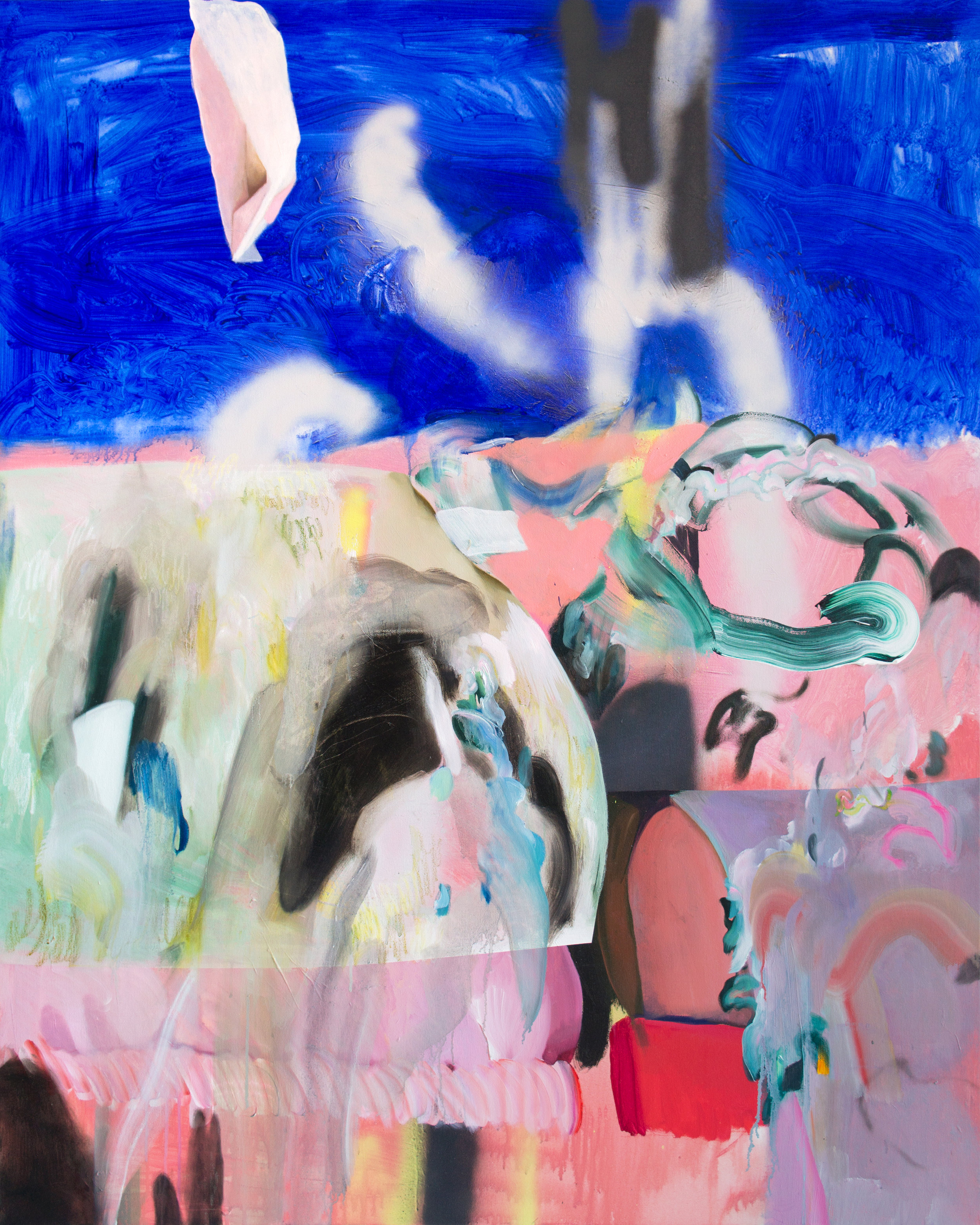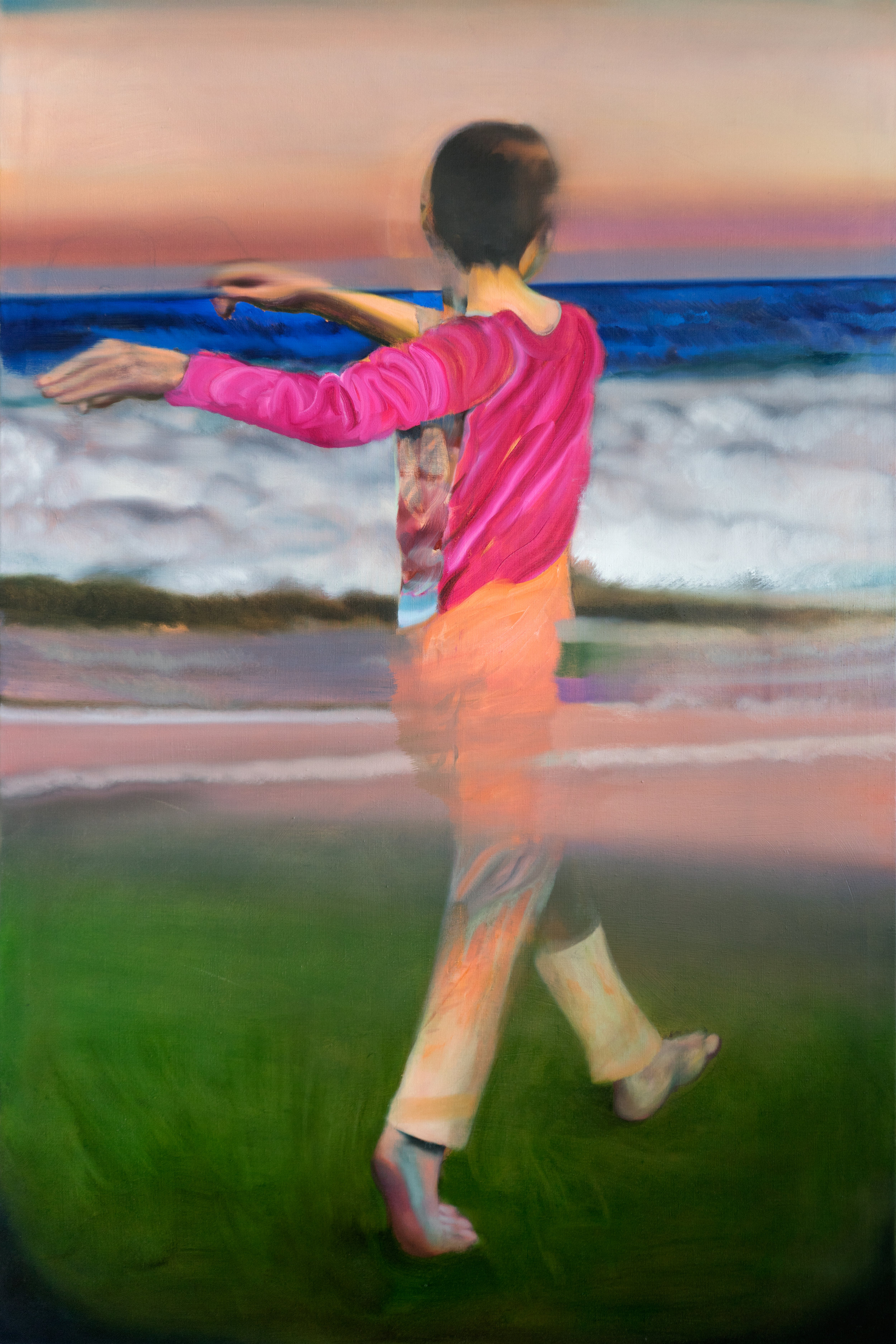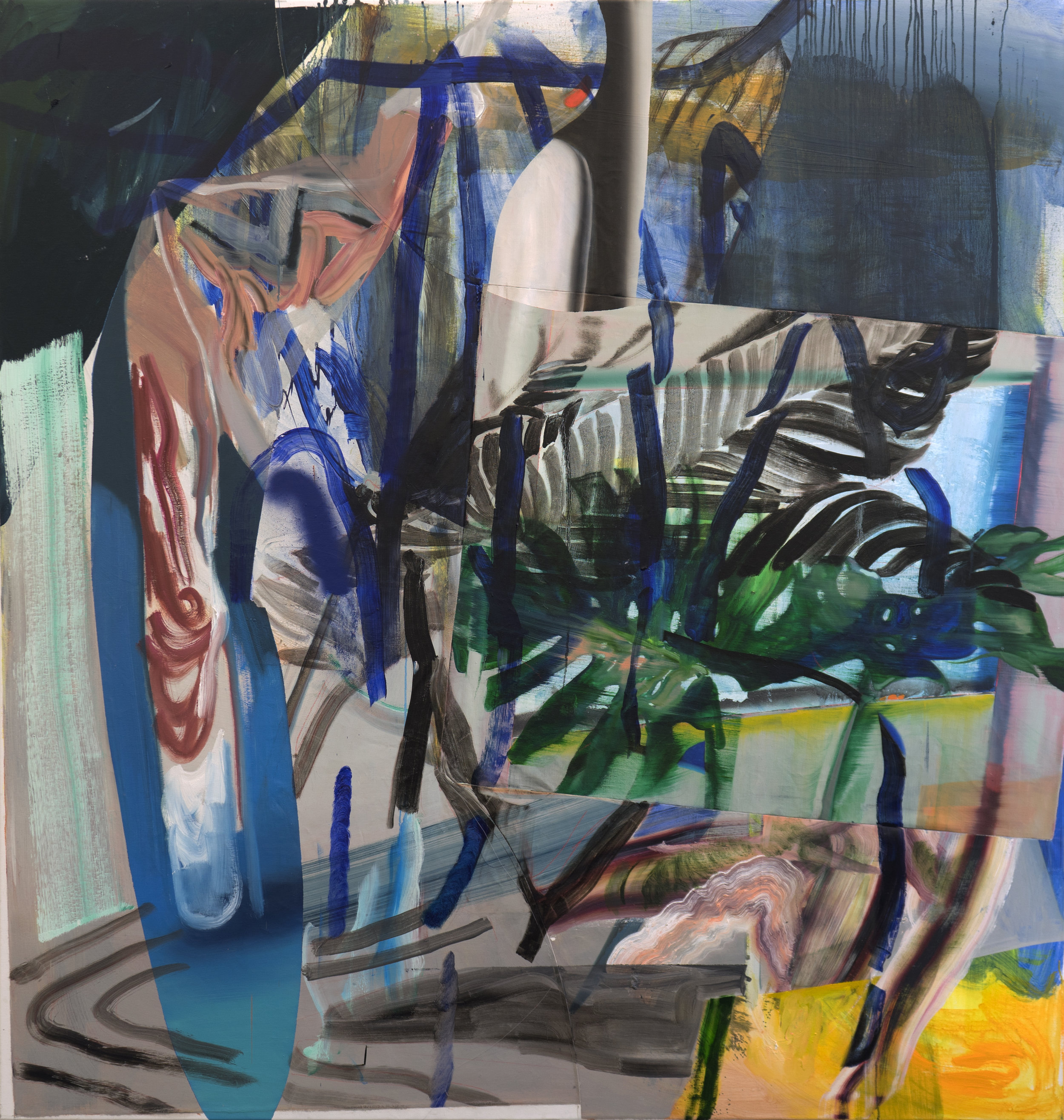Tell us about your painting process. When creating your larger pieces, is there much planning involved compositionally or is your process more intuitive, responding to what you see on the canvas?
It’s as much about what I see, as it is an exploration of what seeing feels like. Large canvases leave room for mark-making, so brushstrokes play upon each other, and compositions grow out of that.

When was the point in your life where you truly felt like you found your artistic voice?
The deeper I go, the closer I feel to something essential. Luckily for me, it happens to come through with painting. In that sense, every painting has shown me a map of my blockages and my potentialities. And it’s been like this from the beginning. Refining that language, however, is a life-long process.

Your solo exhibition How to Let Go incorporated non-representational paintings along with real-life objects. When did you begin using physical objects in your paintings, moving your work into the realm of installation?
So much production goes into art-making today, and most of it is new material. I don’t want to burn through more. This solo show was an opportunity to revitalize my own discards—objects and unfinished paintings—but without that being the catch-line. Emotional resonance must come before conceptual response, and beauty is when both follow through. How to Let Go was literally my coming clean.

In your project Openings, you constructed a painting that was displayed with its canvas loosely suspended, stretching down across the floor. Can you tell us a bit about this project and the audio that accompanied the installation?
That canvas was actually stripped off of a much larger work that I painted, and then cut up, specifically for the show. David Mallon and Filip Samuel Berg of SOUVENIR approached me to push the possibility of a painting exhibition, and the intimate dimensions of their project space was perfect for playing with scale. By hanging and draping fragments throughout the venue, I hoped to mutually engage the viewer in creating, and seeing, composition. Depending on the vantage point, different pieces aligned and interrupted each other, charging something traditionally static and "complete" with new possibilities.
The audio was in three parts, concealed around the perimeter, which basically helped get people moving through and around the installation.

Many of your paintings explore the space outside the constructs of the frame, confronting the viewer with visual elements such as stretcher bars that are often hidden behind the canvas. What made you decide to experiment with this other side of your paintings?
More openings for conversations!
What is the number one thing you want your viewers to take away from your work?
Timeless urgency outside of oneself, and a halting sense of déjà vu.
What painter from the past do you feel the most affinity with?
Caspar David Friedrich













